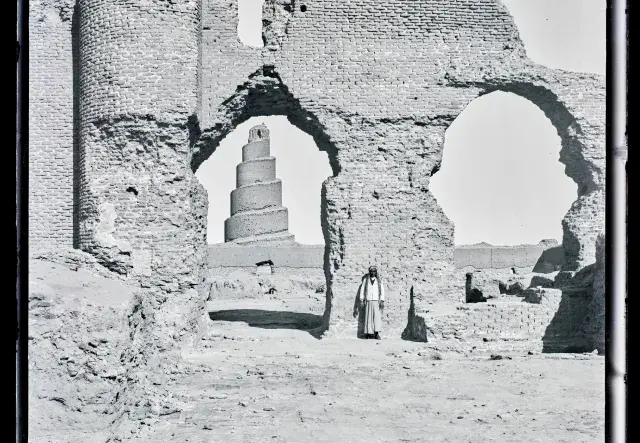HE WHO SEES IT IS DELIGHTED! (THE CAPITAL OF A GLOBAL EMPIRE OVER TIME)

HISTORICAL BACKGROUND
In 762, Baghdad was founded by the Abbasid dynasty (749-1258) as the capital. Iraq developed into a hub of international trade with political contacts at the courts of the Chinese and Byzantine emperors, and the Holy Roman Emperor Charlemagne. Culture and science blossomed, with translations of ancient works and sustainable performances in geography, philosophy, medicine, astronomy and mathematics. Cultural and scientific developments of the period are also of great significance for the history of Europe. The reign of the Abbasids came to an end with the destruction of Baghdad in 1258 by the Mongols.
SAMARRA - THE CITY
Samarra, officially Surra man ra'a (Arabic for "he who sees it is delighted"), developed In two significant construction phases as a gigantic city complex of over 150 km² along the Tigris. In its centre stood the 175-hectare Caliph's Palace, built above the river, which consisted of a series of courtyards, throne rooms and living quarters with extensive garden complexes, hunting reserves, polo playing fields and horse racing tracks. The extent of the construction project was a clear inspiration for the Great Mosque. The building was intended to house 100,000 people, was as big as 2.5 football pitches and surrounded by an enclosing wall measuring 376 m x 444 m.
Samarra - the temporary capital of a global empire - is a UNESCO World Heritage Site.
Link: https://islamic-art.smb.museum/en/story/hauptstadt-weltreich
This article was written by the Islamic Art Museum and is licensed under CC BY-NC 4.0.



